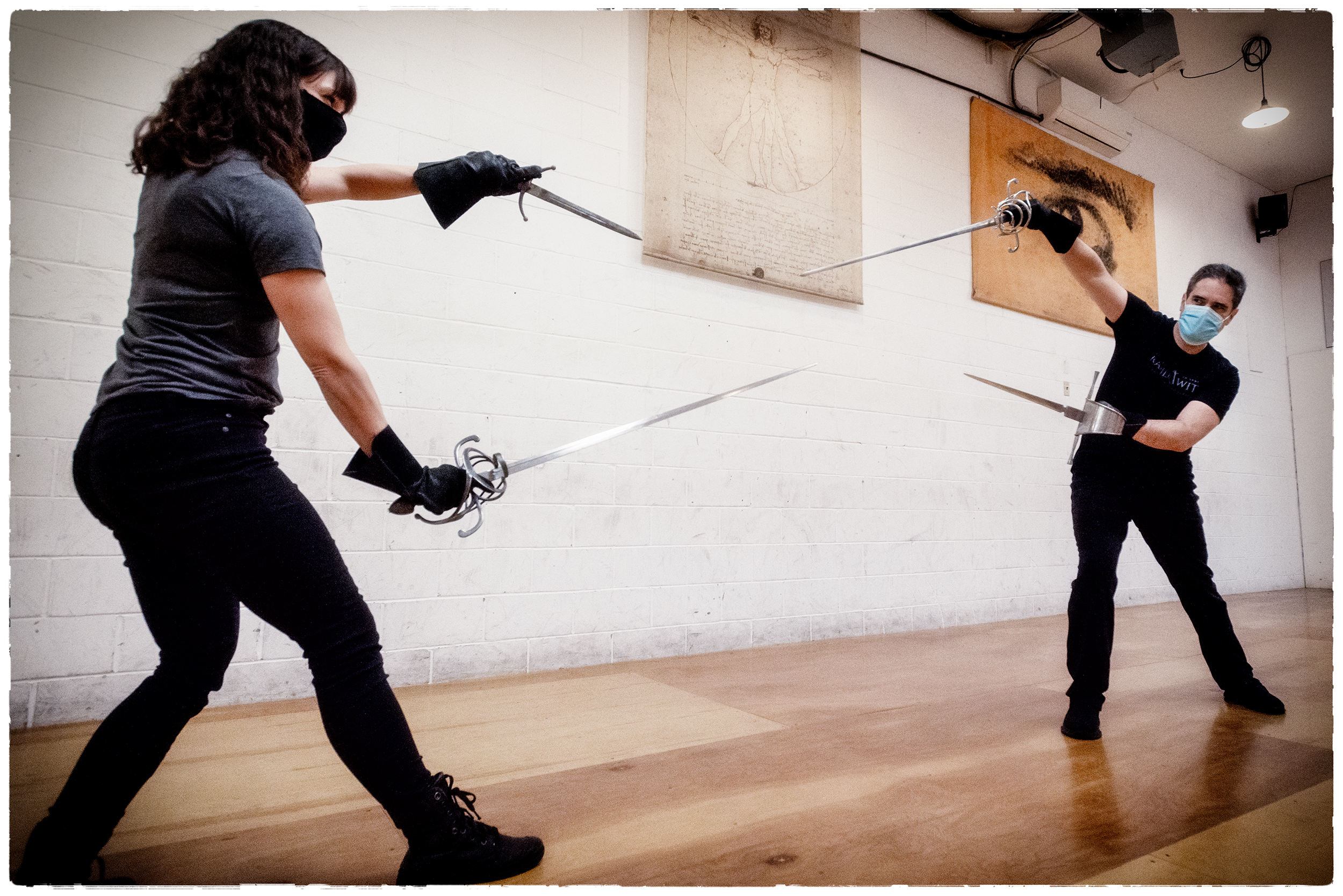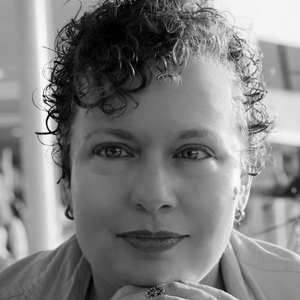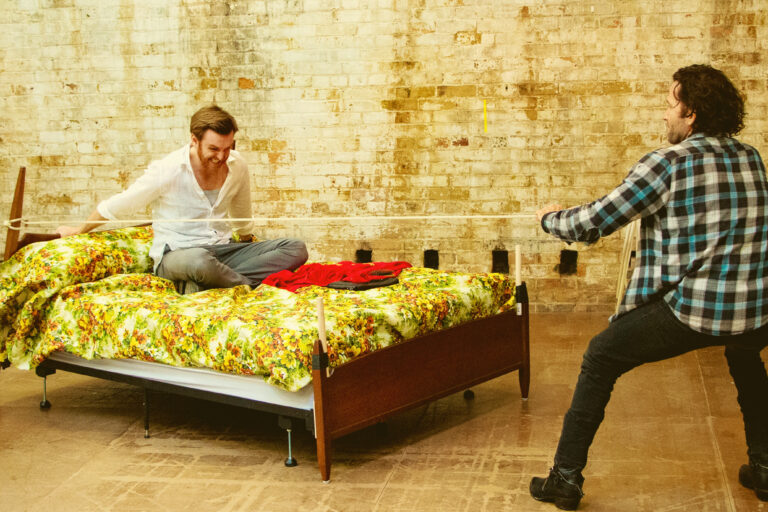At the Tip of the Point of a Sword
We sat down with Rapier Wit founder Daniel Levinson and fight instructor Casey Hudecki to learn the secrets, skills, and thrills of the art of stage combat. One of Canada’s leading fight choreographers and stage combat instructors, Daniel has produced, directed, and taught across Canada, working with the Stratford Festival, Theatre Passe Muraille, Tarragon Theatre, Canadian Stage, Shakespeare in the Rough, and Second City.
Casey Hudecki is an actor, stunt performer, and a certified fight director and fight instructor with Fight Directors Canada. Casey has over 15 years of stage combat performance and teaching experience and is the first woman to be credited with fight direction at the Stratford Theatre Festival. She has directed fights for amateur and professional theatre companies throughout the Greater Toronto Area.
What’s the journey of the fight? Because if it ends in the same place it starts, it’s not a journey.
His t-shirted figure catapults forward, forward, to gold and silver-tipped rods of iron, shackled now, the tools of the melee: rapiers and sabres; foils and épées; basket hilts and arming swords; spears and small swords and quarterstaffs; daggers and knives and Chinese broadswords; European long swords; bucklers and shields.
He halts, one gloved hand unshackling a rapier.
“Your sword is basically an extension of your own arm.”
The sword stretches forth before him – Thrust! Parry! Riposte!
Contained within the art of fencing is the triumvirate of foil, épée, sabre – ancestors of the art of stage combat.
For Daniel, storytelling lies at the fore of the fight.
“I think it’s always important to remember that when you’re working in the realm of violence, it’s still collaboration and partnership and joy and storytelling. I mean, it could be traumatic for people to do this, but the foundation of our work is actually storytelling.”
“There’s something about stage combat that just brings every single element together — movement, voice, intention, story, character, all of it, that’s so cathartic,” adds Casey. “In its essence, every movement is a bit of an intention in the story.”
A dramatic entity contained within the context of story, a fight scene is fuelled by text, demanding weaponry where words are lacking. Whether a dashing sword fight or full-out pummel, fight scenes often occur at pivotal moments in the script, revealing characters at their most primal, emotionally heightened states.
“There’s a way the text and movement work together or don’t work together,” Casey explains. “You’re going to work a small flow of moves. We break fights down into sequences. It’s a vehicle for the story… a give and take of energy between two characters.
“Once you get into the minutiae of it, for me, it’s a combination of, what are the story beats we have to hit? What’s the journey of the fight? Because if it ends in the same place it starts, it’s not a journey,” says Daniel.

Photo by Joseph Amaral.
The players stand poised, instructors retreating now, their roles assumed by duellers and gladiators.
The origins of stage combat date back to antiquity, burgeoning from the Greek stage to the Roman Amphitheatre. European stage combat has its roots in the Elizabethan Era, which also marked the emergence of the first fight directors.
Sword fights, insults, and knavery spice the telling of the story of the Bard’s King Henry IV, Romeo and Juliet and Macbeth.
“Tomorrow, in the battle, think on me, and fall thy edgeless sword: despair and die!” cries the titular Richard III in Shakespeare’s play on the eve of the Battle of Bosworth Field. An enduring symbol of power, swords are imbued with nobility and magic, inhabiting that middle ground between mystical and utilitarian.
“Shakespeare; Hamlet, Romeo and Juliet,” says Daniel. “These plays are hundreds of years old. And so we have a text we can explore and know, and we even have a historical context – not only the history of Shakespeare, but also the historical context of Canadian theatre.”
In the 19th and 20th centuries, fencing masters began exploring older combat techniques involving the use of the broadsword or rapier – a period which also saw the emergence of such swashbuckling heroes as Douglas Fairbanks and Errol Flynn.
Choreographing stage combat is a complex task, culminating in a sequence that lasts minutes at most. Tussles, brawls and duels are rehearsed by degrees – one quarter speed, one half, three quarters: performance.
“They don’t have it in their bodies yet,” Casey explains. “So first things first, get them to remember it. Second, move in a way that’s believable to the needs of it. Once you reach that speed, you’re in performance.”
The art of the fight also entails hand-to-hand combat – punches, hits, throws – unaccompanied by harm to oneself or one’s fellow actors.
“The thing you have to remember when you’re doing stage combat and you can get very, you can get very bogged down in the technicalities… your footwork, your balance not being right. The actors, they’re working from this emotion,” Casey continues. “And it’s like, no, we need to work on the technical, physical safety elements. I don’t start with, ‘okay, I’m gonna punch Dan in the face’. No, we start from ‘this is your safe distance’. That means that whatever I’m hitting, I’m always that far away.”
Designed to create the illusion of violence, stage combat is a dance of constancy: every parry, every action choreographed, the loss of control entirely illusory.
“If your actors are out of control and don’t quite have a handle on the choreography, you have to take something out so they can perform from a place of safety,” Casey says. “The audience should be on the characters’ journey, not worried about whether one actor will hurt the other actor. Because then we haven’t done our job.”
The players lift their weapons, begin again: blades cleave the air before swords and players come to rest in tandem.
“I think it connects to a primal part of you,” says Casey. There are so many layers to it. I pick up a sword and it’s like, I’m a knight, I’m a pirate, I’m Zorro, whatever. Just the fantasy of it, like you’re in your room and you’re eight years old again.”
“There’s a tremendous joy about doing something that feels special, unique to yourself,” adds Daniel. “It’s like you have this secret language. I love the clarity it gives you, this idea that your intensity and your desire are literally at the tip of the point of a sword, forcing you to perform in a way that the audience moves with you throughout the journey.
He turns, retreats, dueller and weapon sated: rapiers and sabres; foils and épées; spears and small swords and quarterstaffs; knives and daggers tethered now, still.
Joy at the point of a sword.
For more information on Canada’s first school for stage combat, visit https://www.rapierwit.com/










Comments